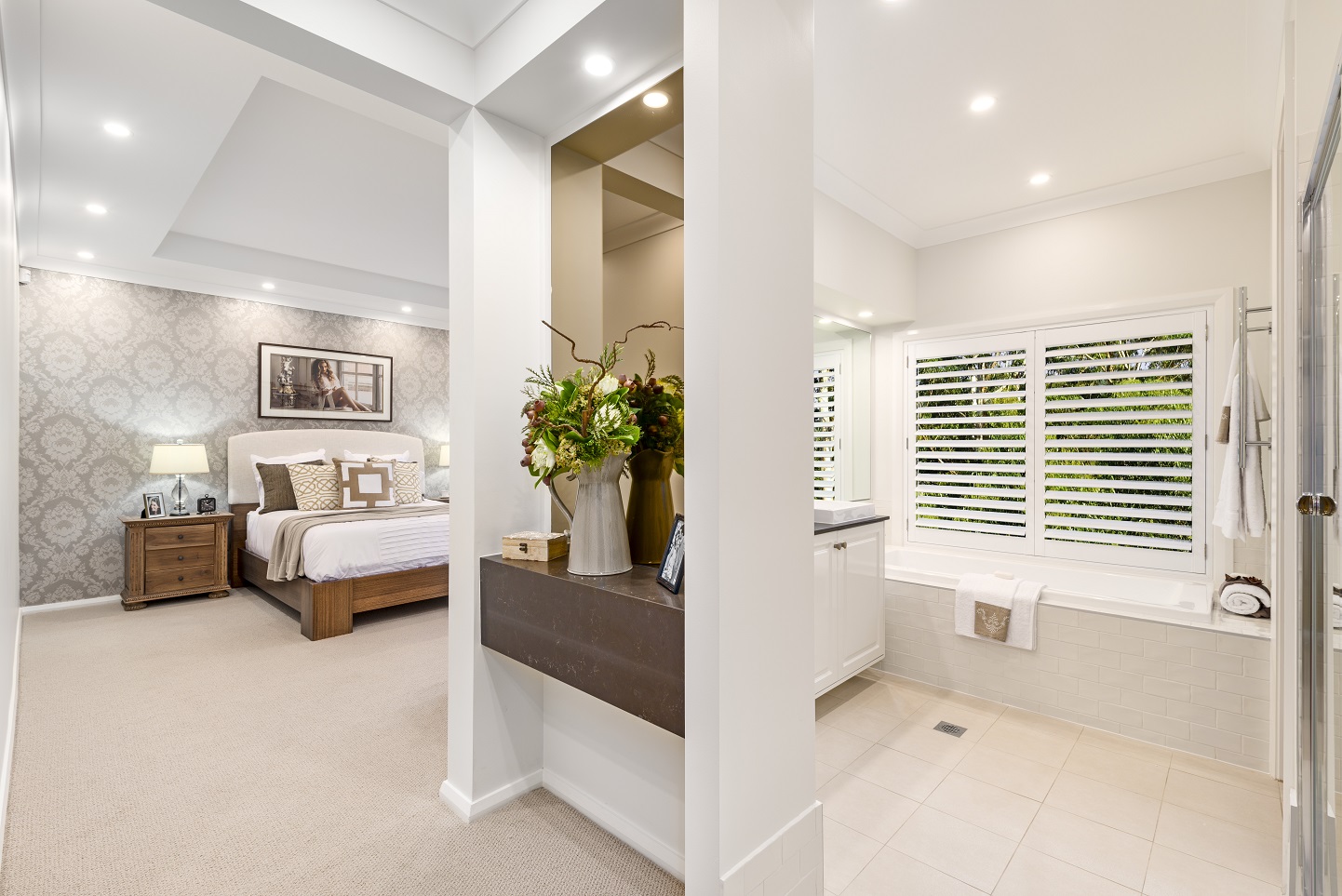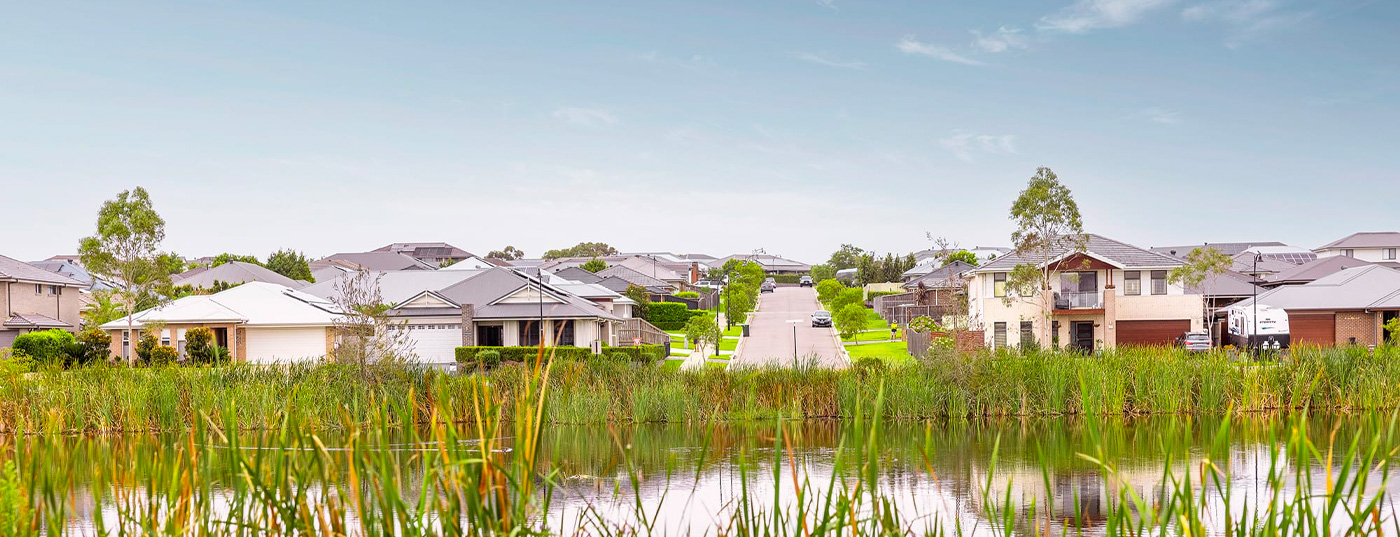Builders Warranty in New South Wales: What You Need to Know
February 6, 2024

Building the home of your dreams is an exciting time as a homeowner – whether it’s in a master-planned community or on a rare block of land in an established suburb. It’s your chance to create exactly what you want, but there are lots of things to consider. One of those things is builders warranty insurance, which you’ll need to understand before construction begins in earnest.
Table of Contents
What is Home Warranty Insurance?
Statutory Builders Warranty in NSW – What Is In House Warranty?
What is Covered By Home Warranty Insurance?
How to Spot Warning Signs of Building Defects
How Long Does a Builder Have to Fix Defects?
What is Home Warranty Insurance?
Builders warranty goes by many different names depending on where you’re located within Australia. Home Warranty Insurance (as it’s known in NSW) is a statutory product, compulsory under relevant building legislation in most states for builders carrying out residential building work. In each state, the government decides the policy terms of home warranty insurance, and underwrites (pays out) the claim to the homeowner.
It may also cover different elements of the build, be for a shorter or longer period than other states, and may or may not be mandatory depending on government legislation.
What to do Before You Start
For anyone who hasn’t previously built a home in New South Wales, the subject can get a bit confusing if you’re not sure what to look for. Remember: paperwork is important. That’s why it pays to do the following:
- Research builders warranty (and additional insurances). Have a candid conversation with your chosen builder and contractors about the warranties they provide. Make sure you confirm in writing all the warranties and guarantees provided by your contractors.
- Always hold on to the latest updated records in case there are warranty issues down the track. Keep a copy of those records in a secure location where you can easily access them.
- Ask to see their Certificate of Eligibility – this sets out the type of construction they’re allowed to do, and how much work the builder is allowed to take on. This certificate is essential in order to make a claim and is different from the certificate of insurance.
- You can check your builder’s license at the Service NSW Public Register, to confirm whether your builder is authorised to complete work requiring HBC insurance.
How to Ensure You’re Covered By Home Warranty Insurance
It is your builder’s responsibility to purchase the correct Certificate of Insurance under the latest HBCF scheme on behalf of you, the homeowner. This insurance covers all residential building projects over $20,000 so be sure to double check with your builder before you pay a deposit or before construction begins – and get them to provide a photocopy of the certificate for your own records. Without this certificate, you won’t be able to make a home warranty insurance claim.
A home warranty insurance certificate should include:
- The name of the builder, building company and homeowner.
- The building site address.
- The building contract sum.
- A brief description of the work being done.
If you’re unsure of whether the Certificate of Insurance is valid, you can check the public Certificates Register online. Make sure you know whether the certificate is for an individual, partnership or company, and that the name on the license is the same as the one issued by NSW Fair Trading.
Statutory Builders Warranty in NSW – What Is In House Warranty?
It’s good to know that in New South Wales there are a number of safeguards built to protect both homeowners and contractors from any potential hiccups during and after the property’s construction. In NSW, contracts for new homes automatically come with a statutory warranty known as the ‘defects and liability period’. This is usually for 13 weeks following the final date of construction for your new home, but speak to your builder as the period covered may be different. The items in this statutory warranty usually require the builder to work:
- As specified by the plans and contract;
- Properly, with suitable and new materials unless otherwise stated;
- In accordance with laws;
- Within the agreed-upon timeframe;
- To a standard wherein the structure can be occupied upon completion;
- To a standard that lives up to any result agreed that it must achieve.
What is Covered By Home Warranty Insurance?
The good news is you aren’t only covered for 13 weeks under the defects and liability period. This falls within the remit of a statutory product now known as the Home Building Compensation Fund (HBCF). Better known simply as ‘home warranty insurance’, the HBCF scheme “covers the homeowner (and subsequent owners) where the contracted building work is incomplete or defective and the builder either:
- Died
- Disappeared
- Become insolvent
- Had their licence suspended for failure to comply with a compensation order in favour of the homeowner made by a Court or the NSW Civil & Administrative Tribunal (NCAT)”.
These are known as trigger events, and must have occurred in order to successfully make a claim. Home builders warranty insurance covers up to $340,000 in NSW.
How to Spot Warning Signs of Building Defects
It’s important to look out for warning signs of building defects in NSW, which can include:
- Delays in the project without the builder asking for an extension of time.
- Going outside the contract period.
- Problems getting the builder on site.
- The builder asking for progress payments without completing work, or outside of the contract.
- Attempts to carry out defective work, or work not specified in the contract.
- Demanding that you pay subcontractors directly when that was not agreed upon.
For peace of mind, why not work with New South Wales’ best builders, and build a home at Waterford?
How Long Does a Builder Have to Fix Defects?
Builders warranty insurance lasts for up to six years after the build’s completion or termination of the building contract. If the contract doesn’t state when the work is complete or there is no contract, the build’s completion occurs on practical completion. Practical completion means the work is completed, except for any omissions or defects that do not prevent the work from being reasonably capable of being used for its intended purpose.
Unless an earlier practical completion date can be established, it is presumed that this date occurred on the earliest of whichever of the following dates:
- The date the builder handed over possession of the work to the homeowner.
- The date the builder last attended the site to carry out work (other than work to fix any defect not affecting practical completion).
- The date of issue for an occupation certificate for the work under the Environmental Planning and Assessment Act (1979).
To ensure you and your builder are compliant with any updates, keep an eye on the latest changes to HBCF reforms.
Non-Completion
Residential building insurance provides cover for the length of 12 months after failure to continue, or cessation of the building work.
Structural Defects
It’s your builder’s responsibility to ensure the property is free from major defects for six years after the build’s completion.
Non-Structural Defects
For all other defects, builders warranty insurance provides cover for up to two years after the completion of work. This includes any loss or damages other than structural defects.
How to Make a Builders Warranty Insurance Claim
Once you’ve notified of your possible claim, it is a good idea to take appropriate action to try and have the original builder/contractor complete and/or fix the defects, by:
- Lodging an official complaint with NSW Fair Trading
- Lodging a claim with NCAT or a court (depending on the build’s value).
You can make a claim at any time, but to successfully submit a claim there must have been a trigger event. As soon as you become aware of a trigger event, it’s important to notify the relevant authority and make a claim.
Structural Guarantee
Despite what you may think, different builders offer different guarantees on their constructions. Many will have lifetime structural guarantees built into their contracts so you won’t have to worry about it over the life of the home, however others may offer 25-year guarantees or shorter.
It’s your responsibility as the buyer to ensure you’re across all the details. The easiest thing to do is enquire with each builder so you understand what they are offering and can make an informed decision.
Waterford is an exciting new development set to become one of the most enviable suburbs in Chisholm, East Maitland. Enjoy natural beauty and spacious surrounds with all the convenience of stylish village living.
Enquire today to find out more about land and house-and-land packages at Waterford.








